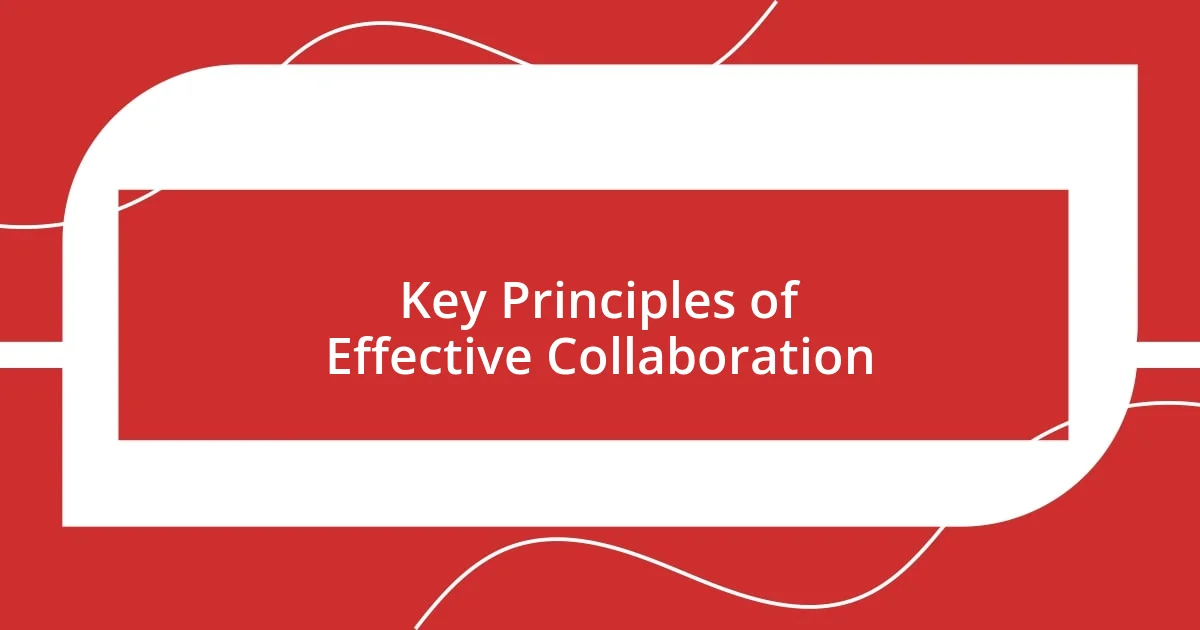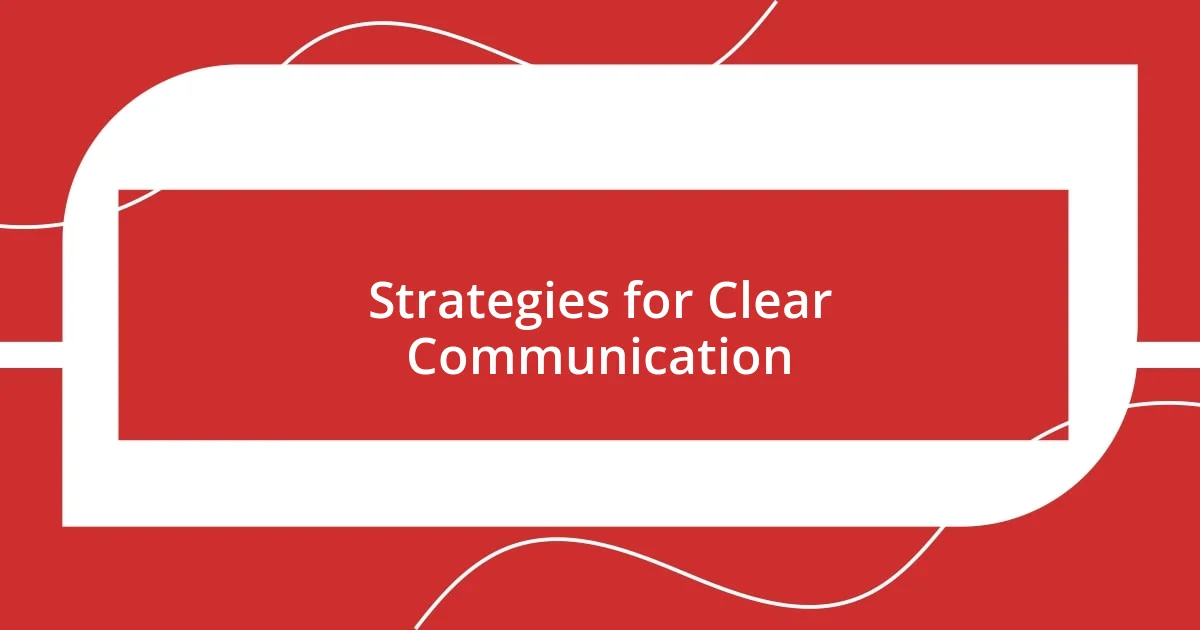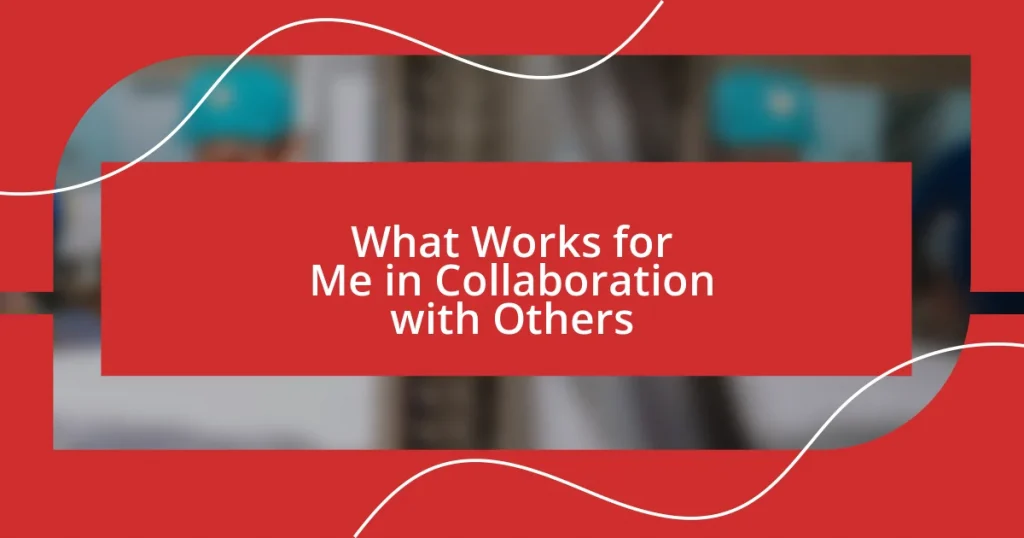Key takeaways:
- Effective collaboration thrives on open communication, mutual respect, and flexibility, enhancing group dynamics and fostering innovative solutions.
- Building trust is essential; strategies like active listening and celebrating achievements strengthen connections among team members.
- Evaluating collaboration success emphasizes personal growth and team dynamics, highlighting that relationships often matter as much as tangible outcomes.

Understanding Collaboration Benefits
Collaboration brings an array of benefits that can transform our work and relationships. I remember a project where I teamed up with a colleague from a different department. Their unique perspective opened my eyes to possibilities I hadn’t considered, and we created something far above what either of us could have achieved alone. Have you ever had that “aha” moment in collaboration that reshaped your understanding of a task or goal?
One of the most profound advantages of working together is the sense of shared purpose. When I collaborated on a community initiative, the collective energy was infectious. That sense of belonging and involvement not only boosted our motivation but also fostered a deeper commitment to the outcome. Isn’t it rewarding to feel like you’re part of something bigger than yourself?
Additionally, collaboration can enhance creativity, as diverse viewpoints spark innovative solutions. During a brainstorming session for a marketing campaign, each person brought their own flavor to the table. I was amazed at how a simple comment could lead to a groundbreaking idea. Isn’t it fascinating how our individual thoughts can weave together to form a vibrant tapestry of creativity?

Key Principles of Effective Collaboration
Effective collaboration hinges on a few core principles that can significantly enhance group dynamics. One principle I’ve seen work wonders is open communication. Early on in my career, I was part of a project where team members hesitated to share their ideas. This led to misunderstandings and frustration. Once we established an environment where everyone felt safe to speak up, our productivity soared. It’s genuinely astonishing how transparency can transform interactions!
Another essential principle is mutual respect. I recall a time when I worked alongside a colleague whose expertise vastly differed from mine. I realized that valuing their knowledge led to a deeper understanding of our goals. This respect not only improved our collaboration but also cultivated a rich exchange of ideas. Have you ever noticed how a little respect can go a long way in fostering trust?
Lastly, flexibility plays a crucial role in effective collaboration. I’ve encountered situations where plans had to change quickly due to unforeseen circumstances. Adapting to these changes as a team was challenging yet rewarding. It taught me that being open to alteration can lead to unexpected and successful outcomes. Have you experienced a situation where flexibility turned a setback into a win?
| Key Principles | Description |
|---|---|
| Open Communication | Encouraging transparent dialogue to foster understanding. |
| Mutual Respect | Valuing each other’s expertise to enrich collaboration. |
| Flexibility | Being adaptable to change for better outcomes. |

Building Trust Among Team Members
Building trust among team members is the foundation of successful collaboration. I’ve found that sharing personal stories can significantly deepen connections. For instance, during a challenging project, my team planned an informal lunch where we opened up about our backgrounds and passions. That experience broke down barriers and created an atmosphere of genuine understanding. When team members see each other as more than just colleagues, trust flourishes—don’t you find it easier to collaborate when you feel a personal bond?
Here are a few strategies that I’ve personally seen contribute to building trust:
- Lead by example: Show vulnerability by admitting mistakes or uncertainties; it encourages others to do the same.
- Be consistent: Keeping promises and following through on commitments builds reliability.
- Celebrate achievements together: Acknowledging individual contributions fosters a sense of belonging and collective pride.
- Engage in active listening: Genuine engagement with team members fosters openness and encourages trust.
- Create a safe environment: Ensure everyone feels comfortable sharing their thoughts without fear of judgment.
These practices not only enhance trust but also create a collaborative spirit that can propel a team towards greater success. Building trust is a journey; as I’ve learned, it often requires time and intentionality.

Strategies for Clear Communication
Clear communication is pivotal in any collaborative effort. I’ve found that being concise and precise in my messages goes a long way. For example, in one project, I noticed that using bullet points instead of lengthy paragraphs helped my teammates grasp essential ideas quickly. Have you ever felt lost in a sea of words? Keeping it straightforward can save everyone time and confusion.
Another effective strategy is to regularly check for understanding. There was a time when I assumed everyone was on the same page after a big discussion. It turned out, we had different interpretations of our goals. By asking questions like, “Can you summarize what we discussed?” I fostered an environment of clarity. This simple step can help catch misunderstandings before they escalate, don’t you think?
Lastly, leveraging technology can enhance communication. Using tools like shared documents or project management apps has become a staple in my collaboration toolbox. I remember a particularly chaotic project where team members were scattered across different locations. Adopting a shared platform allowed us to update progress in real time, making our communication transparent and keeping everyone aligned. Have you experienced how a little tech can streamline communication and bring a team together?

Encouraging Diverse Perspectives
Encouraging diverse perspectives is essential for enriching collaboration and creating innovative solutions. I remember a brainstorming session where, instead of sticking to our usual routines, I encouraged team members to share their unique viewpoints. Surprisingly, the quietest member introduced an idea that completely changed our approach and led us to a groundbreaking solution. Have you ever felt that a quiet voice could hold the key to a breakthrough?
Creating an open environment is crucial. I once facilitated a roundtable where each member had time to express their thoughts without interruption. It was enlightening to see how different backgrounds and experiences shaped their insights. We often underestimate the power of listening—what if giving each person the space to voice their opinions could reveal perspectives we never considered? The diversity in thought not only broadens our vision but also cultivates an atmosphere of respect and appreciation.
Moreover, I always advocate for inclusivity in decision-making. In one project, I suggested that we form a smaller subgroup, including people from varied functions. This mix not only sparked creativity but also led to more comprehensive solutions. How often do we miss out on fresh ideas by overlooking contributions from outside our immediate circle? By embracing diverse perspectives, we tap into a wellspring of creativity that can elevate our collaboration to new heights.

Managing Conflicts and Challenges
Navigating conflicts and challenges is a part of any collaboration, and I’ve learned that addressing them head-on can often be the best approach. There was a time when a disagreement between two team members escalated into a full-blown standoff. Rather than letting it fester, I organized a quick meeting to give everyone a chance to air their perspectives. This direct engagement not only cleared the air but also turned a potentially damaging situation into an opportunity for growth. Have you ever turned a disagreement into a constructive conversation?
Another realization I’ve had is the importance of actively listening during challenging moments. Once, while working on a tight deadline, a colleague felt overwhelmed and frustrated, leading to tension. I took a moment to genuinely listen to their concerns without interrupting. The act of simply being present transformed their frustration into a collaborative dialogue. It’s fascinating how much can change when we prioritize empathy—don’t you think it’s vital to create space for emotions during conflicts?
Lastly, I find it helpful to focus on solutions rather than dwelling on problems. During a project review, we faced backlash for not meeting certain expectations. Instead of pointing fingers, I encouraged the team to brainstorm potential remedies. It was freeing to shift from blame to action, and we ended up with a concrete plan that everyone felt invested in. Isn’t it incredible how a shift in mindset can turn challenges into stepping stones for success?

Evaluating Collaborative Success
Evaluating collaborative success requires a deliberate and reflective approach. I often find myself asking, “What tangible outcomes have we achieved, and how did our collective efforts contribute?” For instance, after concluding a project, I like to gather feedback from all participants. Once, I noted a recurring theme in the comments: team members felt more empowered from our open discussions than the final results alone. It’s fascinating how personal growth can sometimes outweigh the project’s objectives, don’t you agree?
In another instance, I initiated a post-mortem meeting for a campaign that, on paper, fell short of expectations. Rather than discussing only the metrics, we celebrated the creative synergy that sparked innovative ideas. I remember someone sharing how they felt inspired to take risks because of our supportive environment, and it dawned on me: success isn’t just about numbers; it’s also about the experiences we create along the way. Have you ever considered that the value of collaboration extends beyond what we can quantify?
Moreover, I keep a close eye on team dynamics throughout the journey, not just at the end. One project had me noticing how collaboration fostered unexpected friendships, which in turn fueled motivation. When I saw colleagues who once rarely interacted now sharing insights with enthusiasm, I realized our ultimate success lay in building those connections. Isn’t it fascinating how collaboration can evolve relationships, amplifying both personal and professional growth?















